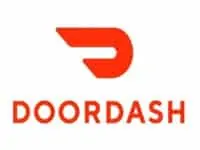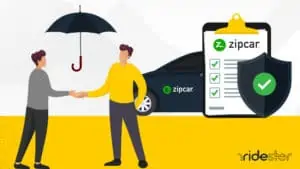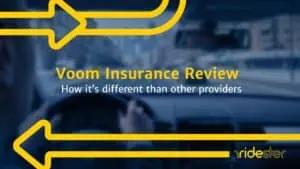Key Information
Mandatory Insurance
DoorDash requires drivers to have personal auto insurance. Coverage is essential outside active delivery periods.
DoorDash’s Coverage
Offers supplemental auto liability insurance during active deliveries. However, it doesn’t cover the driver’s own vehicle damages.
Occupational Insurance
Introduced in 2019, it compensates drivers for injuries during active delivery. But it excludes vehicle damage and general health insurance.
Additional Considerations
Personal auto insurance might not cover deliveries. Drivers should ensure they have either business-use or commercial add-ons to avoid coverage gaps.
- Does DoorDash Require Insurance?
- Does DoorDash Provide Insurance Coverage?
- What Does Standard Coverage Include?
- Understanding the Importance of DoorDash Insurance
- How Much Does Delivery Driver Insurance Cost?
- Pros and Cons of Getting Extra Insurance to Drive for DoorDash
- Conclusion: Should You Get Insurance as a Driver?
- Best Insurance Companies for DoorDash
- Frequently Asked Questions
- Wrapping up
Does DoorDash Require Insurance?
Yes, DoorDash requires drivers to have personal auto insurance. This is not only a prudent measure for the driver’s protection when they aren’t actively delivering but also a mandate in the Independent Contractor Agreement.
In specific scenarios, DoorDash may support the driver’s insurance claims, provided the driver has insurance.
Why Does DoorDash Require Drivers to Have Insurance?
DoorDash insists on its drivers having auto insurance because, outside of active deliveries, drivers are on their own.
In other words, if a dasher isn’t in the process of fulfilling an order, as indicated in their app, they’re not considered in “active delivery”. During these times, DoorDash holds no responsibility. However, if a driver is actively delivering, DoorDash offers supplemental auto liability insurance.
Regardless, since the car is registered under the driver’s name, primary insurance is necessary.
Does DoorDash Provide Insurance Coverage?
DoorDash offers insurance when a driver is actively delivering and is at fault in an accident, especially if their personal insurance denies the claim.
While DoorDash aids with damages and injuries to the other party and provides coverage up to a million for damages and bodily injury, the driver’s personal insurance is accountable for damages to their vehicle.
Additionally, since 2019, DoorDash drivers are eligible for occupational accident insurance, which can compensate them if injured during an active delivery.
What Does DoorDash Occupational Insurance Not Cover?
While the occupational insurance from DoorDash offers compensation for bodily injuries to the dasher, it doesn’t extend to:
- Damages to the dasher’s vehicle.
- General health insurance.
Additionally, there are specific benefits under the insurance:
- Accidental Dismemberment & Paralysis: Dashers affected by accidental dismemberment or paralysis can receive weekly payments, as these conditions are treated as disabilities.
- Older Drivers: DoorDash doesn’t have dedicated policies for older drivers, but some insurance benefits like accidental dismemberment or paralysis might be decreased.
- Inactive Delivery: If a dasher isn’t in the process of an active delivery, DoorDash’s insurance coverage doesn’t apply, leaving them without liability.
- Survivors Benefit: Dasher survivors of delivery accidents can benefit from DoorDash’s occupational accident insurance. It offers significant medical expense coverage up to a million dollars and, in cases of disability, may provide a portion of the dasher’s weekly wage.
What Does Standard Coverage Include?
Since DoorDash insurance doesn’t include auto insurance for Dashers, that means you have to pay for insurance yourself. Since insurance will differ based on what kind of car you drive and where you live, let’s talk about what the average auto insurance policy looks likes:
1. Deductible
According to American Family Insurance, the average deductible for auto insurance is $500. The deductible is the amount of money you have to pay before the insurance company gets involved.
In general, it’s best not to contact your insurance if the repairs are going to cost less than your deductible. Insurance companies tend to raise your premium if you report a repair or accident.
So, if you’re going to report something, you might as well be using your policy to help cover costs. That way, if your premium goes up, you can say you got something out of the deal.
2. Coverage Limits
Coverage limits are the limits of the amount of money the insurance company will pay out in certain circumstances.
This is something that will differ between people. That’s because different states will require different minimums to be considered insured.
It’s best to pay for more insurance than what most state minimums set. Most state minimums are so low that they won’t cover most of what needs paying out after an accident, let alone everything.
In general, the 100/300/100 coverage limits are what’s considered best for a personal vehicle. This coverage plan consists of three parts:
- $100,000 for Bodily Claims: This limits what the insurance company will pay out for bodily claims on a single individual, such as you or the other victims of the accident.
- $300,000 for the Total Accident: While also related to bodily claims, this limit instead refers to the total amount that the insurance company will pay for all claims across the accident for bodily injury.
- $100,000 for Liability Coverage: This limit represents how much money the company will pay out in property damage costs caused by the accident in question for that insurance claim.
As you can see, the numbers for the 100/300/100 plan come from the first three digits of the limits they represent.
If you cannot afford a 100/300/100 coverage plan, then downgrading to a 50/100/50 plan can still offer much better protection than most state minimums while being less expensive.
3. Other Considerations
When you review the coverage conditions for your auto policy, check and see if you’re covered while running your active deliveries.
Business uses are a common exception to many personal auto policies. If your insurance doesn’t cover delivery driving, you may need to add a business-use or commercial add-on to your policy.
This increases the cost of your insurance. But, this add-on covers you in the event of an accident while running a delivery.
Understanding the Importance of DoorDash Insurance
While personal auto insurance covers everyday vehicle use, it doesn’t typically cover business-related tasks like deliveries. If you drive for DoorDash or plan to, you’re venturing into “business use” territory.
Insurance companies view delivering for DoorDash as a business activity and may require specific coverage to protect you during deliveries.
Types of Insurance for DoorDash Drivers
- Business-use Coverage: This is an add-on to many auto policies. It provides protection during business operations for a minor premium increase.
- Commercial Coverage: Suitable for vehicles used mainly for business, like regular DoorDash deliveries, this covers both the business and the car. There is also TLC insurance, which is required for rideshare drivers in states like New York.
- Personal Coverage with Business Notation: Designed for personal vehicles, some insurers allow a “business use” annotation, suitable for occasional delivery drivers.
We Recommend Commercial Coverage
If you use your car exclusively to run deliveries, we suggest adding commercial coverage. For most people, this isn’t the right choice.
All of these add-ons will increase the total cost of your insurance unless your policy covers one of these options already. Add-ons like this aren’t standard and are more expensive for the insurance company to cover. That’s why you’ll see the price hike up with these options.
However, even with the price increases, you should always notify your insurer about your vehicle’s business use to avoid complications.
How Much Does Delivery Driver Insurance Cost?
The cost for delivery insurance depends on the insurance company you have. The previously mentioned insurance companies are some of the best offers available to delivery drivers, but it’s typically a per-month payment.
Pros and Cons of Getting Extra Insurance to Drive for DoorDash
There are positives and negatives to spending additional money each month to insure your car for a potential delivery accident with DoorDash. It’s ultimately up to you whether one outweighs the other.
Provides a safety net in case of an accident.
DoorDash offers insurance for damages to third parties or personal injuries during an accident.
Covers damages to your vehicle.
Ensures full coverage during unexpected events.
Premiums may not equate fairly with the actual time spent driving.
Insurance only applies during active delivery, which may not be cost-effective for part-time drivers.
Conclusion: Should You Get Insurance as a Driver?
Considering the risks involved, I would absolutely recommend getting additional insurance as a DoorDash driver.
The unpredictable nature of driving, especially in a delivery capacity, underscores the need for comprehensive coverage. DoorDash’s integrated insurance benefits cater to damages and dasher injuries, offering a robust safety net.
When combined with personal insurance, drivers are afforded peace of mind and financial protection against unforeseen incidents. Though there’s an upfront cost, the potential fallout from being uninsured is far more daunting.
Essentially, insurance is a small investment for significant peace of mind.
Best Insurance Companies for DoorDash
When you get auto insurance, you want that insurance to be trustworthy and effective when the worst case happens. The insurance industry can be confusing, so these are some of the auto insurance companies that many many Dashers choose to be their insurer:
1. Geico
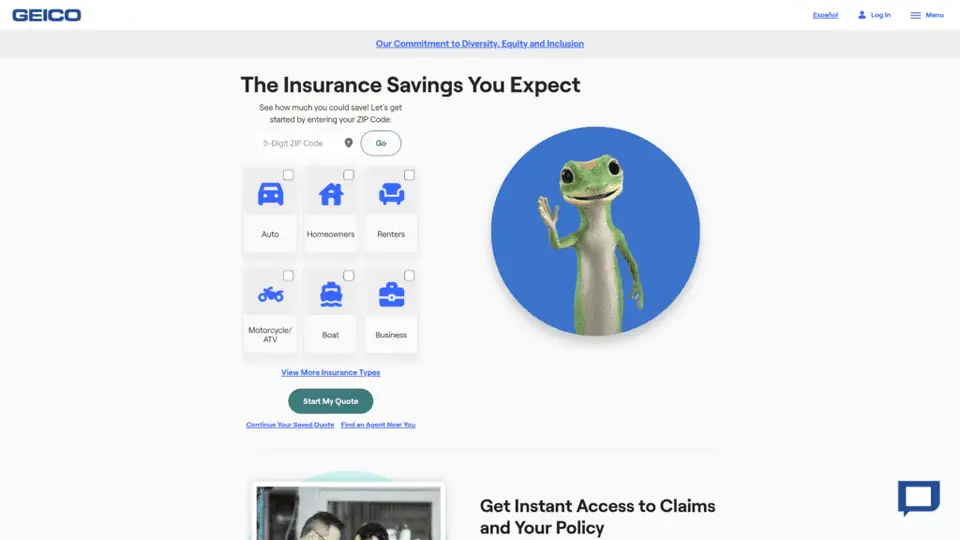
Geico is renowned for its comprehensive Rideshare Insurance option, a hybrid policy that resonates well with those who drive for multiple delivery and rideshare companies. With its extensive presence in over 40 states, drivers appreciate the broad reach and flexibility this policy offers.
Geico’s Rideshare Insurance replaces the need for a regular personal policy, seamlessly integrating both personal and business-use coverage.
2. Progressive
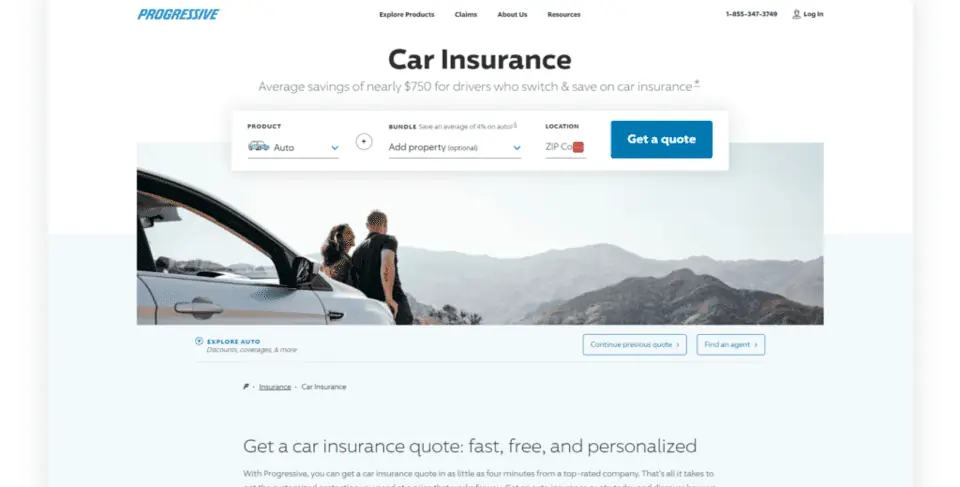
Progressive stands out due to its straightforward add-ons that enhance existing personal auto policies to include delivery services.
DoorDash drivers value the simplicity of bolstering their current insurance without diving into a completely new policy. Progressive’s rideshare add-on enhances your personal auto policy to include delivery driving.
It’s worth noting that this add-on doesn’t alter your original coverage limits, meaning the maximum amounts the insurer will pay in the event of a claim remain unchanged. The add-on is designed to ensure coverage continuity when driving for business without requiring drivers to upgrade to a higher coverage level.
However, it’s important to remember that if an accident occurs while on a DoorDash delivery, Progressive’s coverage would only kick in after DoorDash’s own liability insurance has been exhausted.
3. State Farm
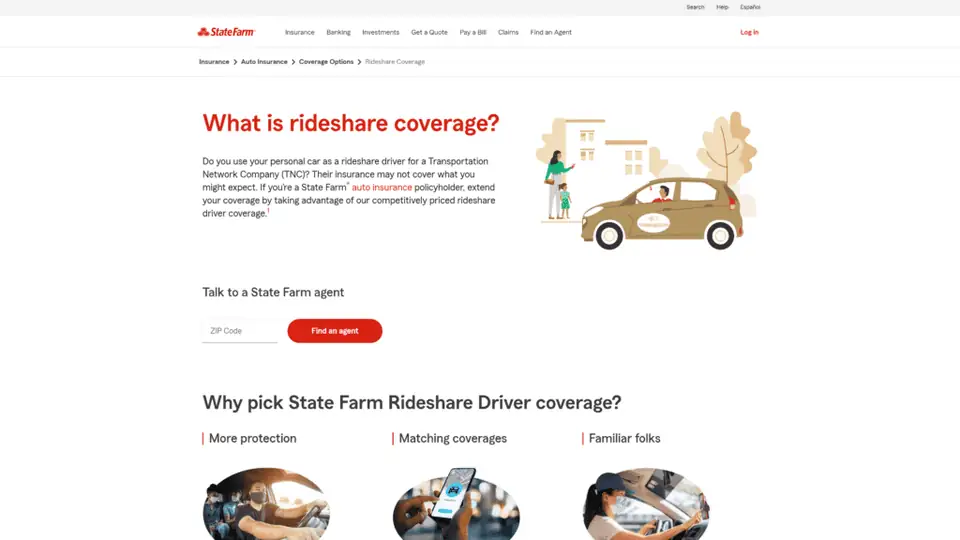
State Farm’s approach to delivery driving is straightforward and user-friendly.
By simply adding a business-use add-on to one’s existing policy, drivers are covered for delivery tasks. This simplicity, combined with State Farm’s reputable customer service, makes it a go-to choice for many DoorDash drivers.
State Farm requires drivers to add a business-use endorsement to their policy to be covered while using delivery apps.
While this add-on does incur an extra cost, typically between 15-20% of the original premium, it provides the peace of mind that comes with being comprehensively insured for both personal and business use.
Frequently Asked Questions
These are some of the most asked questions about insurance and DoorDash:
Does DoorDash Offer Health Insurance?
DoorDash does offer health insurance, but only to those who have been driving for a while. You also have to receive high ratings on your deliveries.
Do You Need Commercial Insurance for DoorDash?
No, you do not need commercial insurance for your car if you get a rideshare or business-use add-on for your policy.
Does DoorDash Check Your Insurance?
DoorDash’s website states that they expect you to have a current auto insurance policy to drive with them.
Do You Need to Tell Your Insurance You Drive for DoorDash?
Informing your insurance that you work as an independent contractor for DoorDash is essential. This ensures clarity on coverage extents, especially given DoorDash’s specific insurance provisions. Being upfront prevents potential future out-of-pocket expenses.
Wrapping up
DoorDash offers a great way to make some extra cash by delivering for them. However, insurance coverage for this changes because you’re now a business user of your car.
That means that normal auto insurance won’t cover you while driving. Understanding that and planning well can mean the difference between having coverage and not.
If you want to check out some of the other articles we’ve written on driving for deliveries, we have a whole section of our blog dedicated to those services. Check them out and see if driving for DoorDash is the right choice for you.


